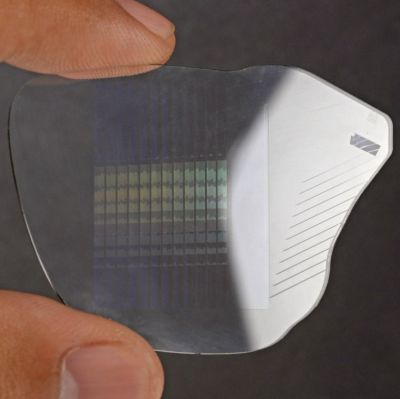It’s amazing how fragile our digital lives can be, and how quickly they can fall to pieces. Case in point: the digital dilemma that Paris Buttfield-Addison found himself in last week, which denied him access to 20 years of photographs, messages, documents, and general access to the Apple ecosystem. According to Paris, the whole thing started when he tried to redeem a $500 Apple gift card in exchange for 6 TB of iCloud storage. The gift card purchase didn’t go through, and shortly thereafter, the account was locked, effectively bricking his $30,000 collection of iGadgets and rendering his massive trove of iCloud data inaccessible. Decades of loyalty to the Apple ecosystem, gone in a heartbeat.
teardown264 Articles
Teardown Of A 5th Generation Prius Inverter
The best part about BEV and hybrid cars is probably the bit where their electronics are taken out for a good teardown and comparison with previous generations and competing designs. Case in point: This [Denki Otaku] teardown of a fifth-generation Prius inverter and motor controller, which you can see in the video below. First released in 2022, this remains the current platform used in modern Prius hybrid cars.
Compared to the fourth-generation design from 2015, the fifth generation saw about half of its design changed or updated, including the stack-up and liquid cooling layout. Once [Otaku] popped open the big aluminium box containing the dual motor controller and inverters, we could see the controller card, which connects to the power cards that handle the heavy power conversion. These are directly coupled to a serious aluminium liquid-cooled heatsink.
At the bottom of the Prius sandwich is the 12VDC inverter board, which does pretty much what it says on the tin. With less severe cooling requirements, it couples its heat-producing parts into the aluminium enclosure from where the liquid cooling loop can pick up that bit of thermal waste. Overall, it looks like a very clean and modular design, which, as noted in the video, still leaves plenty of room inside the housing.
Regardless of what you think of the Prius on the road, you have to admit it’s fun to hack.
Continue reading “Teardown Of A 5th Generation Prius Inverter”
The Fascinating Waveguide Technology Inside Meta’s Ray-Ban Display Glasses

Recently the avid teardown folk over at iFixit got their paws on Meta’s Ray-Ban Display glasses, for a literal in-depth look at these smart glasses. Along the way they came across the fascinating geometric waveguide technology that makes the floating display feature work so well. There’s also an accompanying video of the entire teardown, for those who enjoy watching a metal box cutter get jammed into plastic.
Overall, these smart glasses can be considered to be somewhat repairable, as you can pry the arms open with a bit of heat. Inside you’ll find the 960 mWh battery and a handful of PCBs, but finding spare parts for anything beyond perhaps the battery will be a challenge. The front part of the glasses contain the antennae and the special lens on the right side that works with the liquid crystal on silicon (LCoS) projector to reflect the image back to your eye.
While LCoS has been used for many years already, including Google Glass, it’s the glass that provides the biggest technological advancement. Instead of the typical diffractive waveguide it uses a geometric reflective waveguide made by Schott, with the technology developed by Lumus for use in augmented reality (AR) applications. This is supposed to offer better optical efficiency, as well as less light leakage into or out of the waveguide.
Although definitely impressive technology, the overall repairability score of these smart glasses is pretty low, and you have to contest with both looking incredibly dorky and some people considering you to be a bit of a glasshole.
Continue reading “The Fascinating Waveguide Technology Inside Meta’s Ray-Ban Display Glasses”
Apple’s Continuing Failing Repair Score With The AirPods Pro 3
It takes quite a bit of effort to get a 0 out of 10 repairability score from iFixit, but in-ears like Apple’s AirPods are well on course for a clean streak there, with the AirPod Pro 3 making an abysmal showing in their vitriolic teardown video alongside their summary article. The conclusion is that while they are really well-engineered devices with a good feature set, the moment the battery wears out it is effectively e-waste. The inability to open them without causing at least some level of cosmetic damage is bad, and that’s before trying to glue the device back together. Never mind effecting any repairs beyond this.
Worse is that this glued-together nightmare continues with the charging case. Although you’d expect to be able to disassemble this case for a battery swap, it too is glued shut to the point where a non-destructive entry is basically impossible. As iFixit rightfully points out, there are plenty of examples of how to do it better, like the Fairbuds in-ears. We have seen other in-ears in the past that can have some maintenance performed without having to resort to violence, which makes Apple’s decisions here seem to be on purpose.
Although in the comments to the video there seem to be plenty of happy AirPod users for whom the expected 2-3 year lifespan is no objection, it’s clear that the AirPods are still getting zero love from the iFixit folk.
Continue reading “Apple’s Continuing Failing Repair Score With The AirPods Pro 3”
When USB Charger Marketing Claims Are Technically True

We have seen many scam USB chargers appear over the years, with a number of them being enthusiastically ripped apart and analyzed by fairly tame electrical engineers. Often these are obvious scams with clear fire risks, massively overstated claims and/or electrocution hazards. This is where the “600W” multi-port USB charger from AliExpress that [Denki Otaku] looked at is so fascinating, as despite only outputting 170 Watt before cutting out, it’s technically not lying in its marketing and generally well-engineered.
The trick being that the “600W” is effectively just the model name, even if you could mistake it for the summed up output power as listed on the ports. The claimed GaN components are also there, with all three claimed parts counted and present in the main power conversion stages, along with the expected efficiency gains.
While testing USB-PD voltages and current on the USB-C ports, the supported USB-PD EPR wattage and voltages significantly reduce when you start using ports, indicating that they’re clearly being shared, but this is all listed on the product page.
The main PCB of the unit generates the 28 VDC that’s also the maximum voltage that the USB-C ports can output, with lower voltages generated as needed. On the PCB with the USB ports we find the step-down converters for this, as well as the USB-PD and other USB charging control chips. With only a limited number of these to go around, the controller will change the current per port dynamically as the load increases, as you would expect.
Considering that this particular charger can be bought for around $30, is up-front about the limitations and uses GaN, while a genuine 300 Watt charger from a brand like Anker goes for $140+, it leads one to question the expectations of the buyer more than anything. While not an outright scam like those outrageous $20 ‘2 TB’ SSDs, it does seem to prey on people who have little technical understanding of what crazy amounts of cash you’d have to spend for a genuine 600 Watt GaN multi-port USB charger, never mind how big such a unit would be.
Continue reading “When USB Charger Marketing Claims Are Technically True”
Surprisingly Refined Perpetual Motion Device Teardown
Perpetual motion devices are either a gag, a scam, or as in the case of this particular toy that [Big Clive] bought on AliExpress, a rather fascinating demonstration of a contact-free inductive sensor combined with a pulsed magnet boost for the metal ball. A cool part about the device is that it comes with a completely clear enclosure, so you can admire its internals while it’s operating. Less cool was that after unboxing the device wasn’t working as the detector wasn’t getting the 12 V it needs to operate, requiring a bit of repairing first.

Based on the label on the bottom of the device with the creative model identifier P-toy-002, its standby current is 10 µA which ramps up to 3 A when it’s operating. This makes sense when you look at the two core components: the industrial inductive detector, and a rather big electromagnet that’s driven by a bank of three 10 mF, 35V capacitors, turning it into something akin to a coilgun. Annoyingly, an attempt was made to erase most of the IC package markings.
The circuitry isn’t too complex, fortunately, with an adjustable electromagnet coil voltage circuit combined with a MOSFET to provide the pulse, and a 78L12 regulator to generate the 12 VDC from the coil’s voltage rail for the sensor that is monitored by a MCU.
Continue reading “Surprisingly Refined Perpetual Motion Device Teardown”
Fnirsi IPS3608: A Bench Power Supply With Serious Flaws
Fnirsi is one of those brands that seem to pop up more and more often, usually for portable oscilloscopes and kin. Their IPS3608 bench power supply is a bit of a departure from that, offering a mains-powered PSU that can deliver up to 36 VDC and 8 A in a fairly compact, metal enclosure. Recently [Joftec] purchased one of these units in order to review it and ended up finding a few worrying flaws in the process.
One of the claims made on the product page is that it is ‘much more intelligent than traditional power supplies’, which is quite something to start off with. The visual impression of this PSU is that it’s somewhat compromised already, with no earth point on the front next to the positive and negative banana plug points, along with a tilting screen that has trouble staying put. The USB-C and -A ports on the front support USB-PD 3.0 and a range of fast charge protocols
The ‘intelligence’ claim seems to come mostly from the rather extensive user interface, including a graphing function. Where things begin to fall apart is when the unit locks up during load testing presumably due to an overheating event. After hooking up an oscilloscope, the ripple at 1 VDC was determined to be about 200 mV peak-to-peak at 91 kHz. Ripple increased at higher voltages, belying the ’10 mV ultra-low ripple’ claim.
A quick teardown revealed the cause for the most egregious flaw of the unit struggling to maintain even 144 Watt output: a very undersized heatsink on the SMPS board. The retention issues with the tilting issue seemed to be due to a design choice that prevents the screen from rotating without breaking plastic. While this latter issue could be fixed, the buggy firmware and high ripple on the DC output make this €124 ‘285 Watt’ into a hard pass.
Continue reading “Fnirsi IPS3608: A Bench Power Supply With Serious Flaws”


















